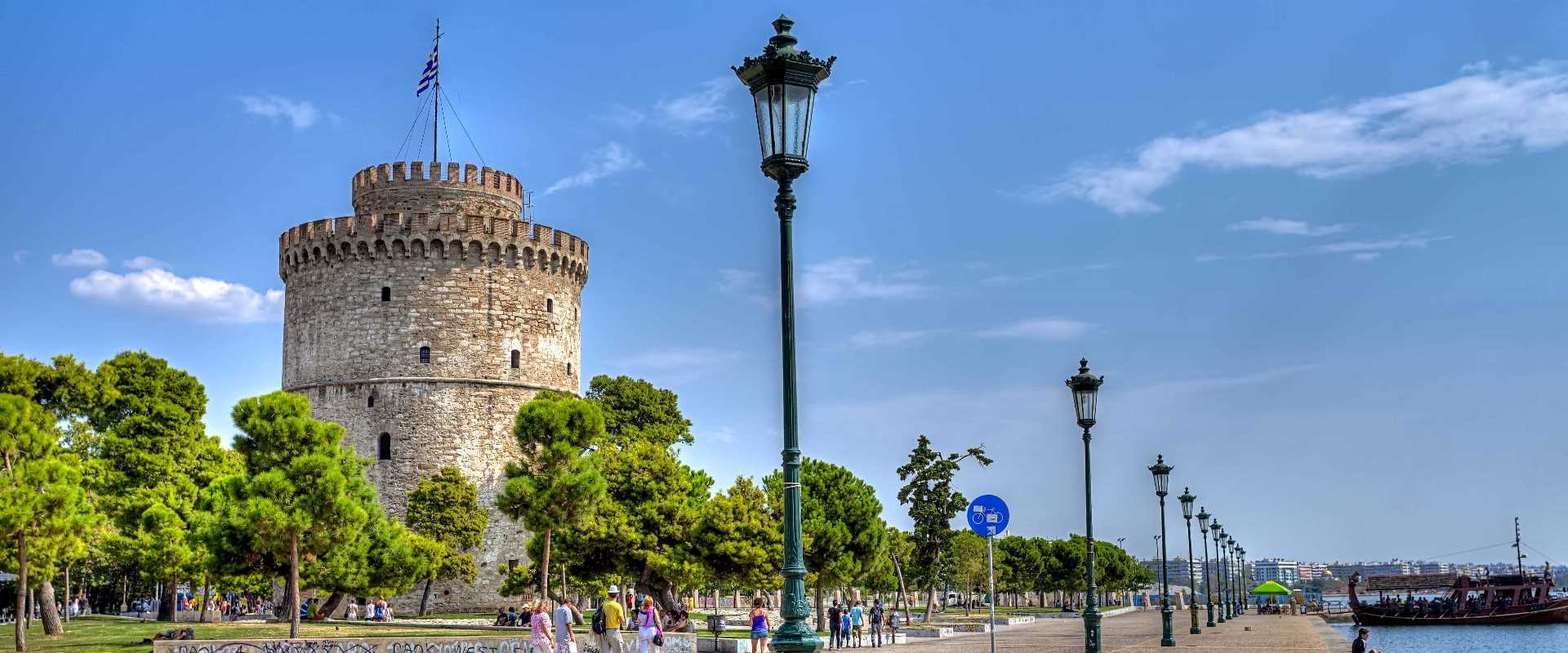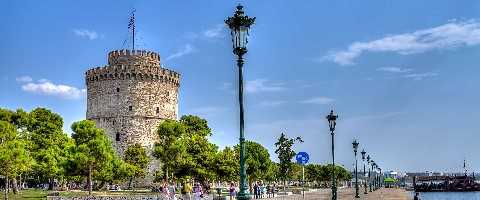
Excursions from Thessaloniki to Pella and Edessa
The 58 acre palace complex of Pella was the birthplace of Alexander the Great of Macedonia and a court blessed by poets such as Euripides, Aratus and, of course, Alexander’s tutor Aristotle.
In the 4th century BC, the regions of Edessa, Pella, Giannitsa (Giannitsa became important around 1372 during Ottoman occupation) and Vergina (original name: Aiges, first capital of Macedonian Kingdom – the second capital being Pella) were at the heart of classical Macedonia. It was Phillip II, Alexander The Great’s father, who began the transformation of Macedonia into a world power. In fact Vergina, the first capital is in the Imathia region but only 54 km south from Pella.
At that time, Pella was at its height, the capital of the region and an opulent city with wide boulevards, well built houses with mosaic floors and a sophisticated water and sewage distribution system which encompassed the whole city. Originally by the sea (although eventually cut off due to the silting of the Axios, Aliakmon and Loudias rivers), the port and central Agora, the largest in the ancient world, were the business and administrative hub of the Macedonian Empire.
After 200 years as Macedonia’s capital, the status of Pella was downgraded by the Romans and in 90 BC was devastated by an earthquake. The excellent Pella Museum, which is located on the site bears witness to the wealth and opulence of the city.
The city of Edessa, the modern capital of the Pella region, is easily reached by train or car from Thessaloniki (90 km) and is located 48 km from Pella. A taxi between the two will take about 45 minutes. If you have driven to Edessa from Thessaloniki then it is an easy drive to Pella.
Founded some 300 years before Pella and the capital of the region before Pella, ancient Edessa (remains from the Roman times) was to be found a little below the current location of the city. In the middle ages, because of its advantageous location on the Roman Via Egnatia which connected the Adriatic sea with Asia Minor, the city was fought over by Bulgarians, Byzantines and Serbs.. The Turks then followed and in the second world war, with the Nazi occupation of Greece, half the city was burned to the ground in retaliation to the shooting of one soldier by the Greek Resistance.
During the Salonica Front period in World War One, the region became a transit centre for the French troops who constructed significant infrastructure works such as the railway station and hospitals. Ho Chi Minh, the legendary Vietnamese leader, described it as ‘The City of Waters and Cherries’ as he was stationed there when serving with the French army during World War One. The city is located at the top of a 1,000 foot rock on which the ancient acropolis was located.
Today, Edessa thrives on tourism (skiing in winter) and is a convenient base from which to visit the rich archaeological remains in Pella, Vergina and other ancient sites in the surrounding region. It is also a city of waterfalls. The Edessaios river, fed by two mountain lakes, gurgles through the city via canals and streams until it reaches the tree lined precipice and falls hundreds of feet into the fertile valley below.
Overnight stays can be arranged in Edessa where there are several good hotels (Hotel Varosi Four Seasons/Hotel Hagiati) should this be required.
Summary of places to visit:
- Pella Archaeological Museum and Site,
- Edessa city (central park with waterfalls – walking distance - the tallest is “Karanos Waterfall” ~approx 70m high).
- Voras Ski Center (https://kaimaktsalan.gr/)
- Thermal Springs and Baths, Loutraki Arideas (or Pozar) https://www.loutrapozar.info/en/contact/Pozar-Installations/ )
Day trip combinations from Thessaloniki:
- Loutraki Aridea (enjoy natural thermal springs) and Edessa in the afternoon.
- Edessa city tour and Pella Archaeological Museum and Site (or vice-versa).
- Pella & Vergina Archaeological Museums.

















